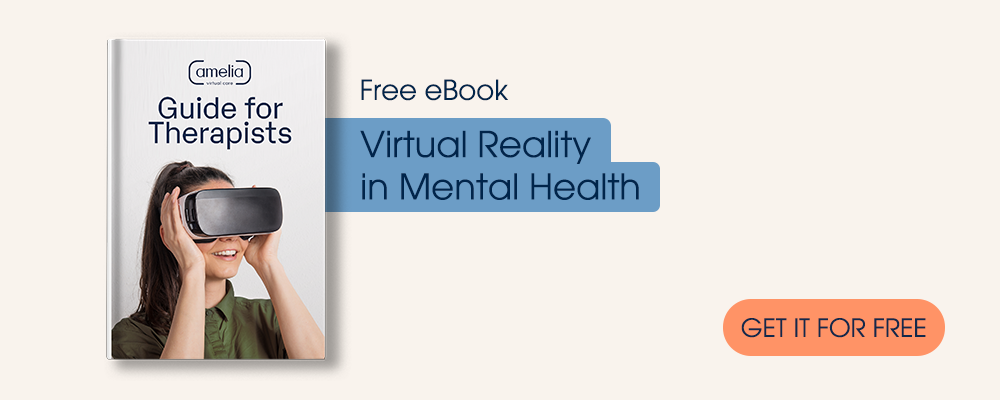What’s the difference between stress and anxiety?
Stress and anxiety are two physiological processes that occur in all people. However, while both have increased in recent years, mainly due to the COVID-19 pandemic, many individuals have trouble distinguishing between the two mental conditions. In today’s post, we explain the similarities and differences between the emotional responses and touch upon how, when left untreated or in more severe cases, these conditions could become disorders. We also take a look at a few coping mechanisms that could provide some relief for mild cases. Finally, we shed light briefly on the efficacy of a breakthrough, cost-efficient therapy that capitalizes on technology and meets the mental health needs of tomorrow.
How are stress and anxiety alike?
Similarities between stress and anxiety tend to eclipse the underlying differences between the two mental conditions. Both are emotional and physiological responses with an almost identical set of symptoms.In other words, when a person experiences either anxiety or stress, both may report feeling:
- Insomnia (trouble sleeping)
- Concentration difficulties
- Fatigue or tiredness
- Muscle tension
- Irritability
However, although symptoms may overlap, stress and anxiety can arise for different reasons.
What’s the difference between stress and anxiety?
Even though stress and anxiety can elicit symptoms of the exact nature, each condition’s overall characterization varies. For instance, in many cases, stress can happen because of an external trigger. An example of such a trigger includes a work deadline, financial troubles, or a heated debate with a loved one. When stress becomes too much, people could experience additional symptoms such as digestion problems or anger. However, when people feel anxiety, their worries become excessive and persist. A stressor may not even be present for anxiety to take hold. While it is typical to experience mild anxiety from time to time, like when waiting to present a speech, more severe cases could lead to impairments or mental disorders.
According to the National Institute of Mental Health, approximately 31% of adults in the United States have experienced an anxiety disorder at one point in their lives. 1
Is an anxiety attack like a panic attack? What about stress attacks?
First, a stress attack is a non-existing, non-medical term. Individuals may experience moments of high stress and report the onset of both mental and physical symptoms. However, when stress becomes too overwhelming, the situation can feed into anxiety and give the impression of an “attack”. This so-called “anxiety attack” is not clinically recognized by the Diagnostic and Statistical Manual of Mental Disorders (DSM–5). Instead, excessive and continuous anxiety could indicate a more serious problem or underlying disorder, such as generalized anxiety disorder (GAD). On the contrary, though, the DSM-5 does recognize panic attacks. A panic attack is unique in that it is sudden and includes an intense fear (with no real or apparent cause) and severe physical reactions. The frequency of panic attacks can differ from one person to the next, and individuals who suffer an episode will often feel fatigued or exhausted soon afterwards. Symptoms for a panic attack include:
- The sense of impending doom or danger
- Fear of losing control or death
- Tachycardia (increased heart rate)
- Sweating
- Trembling or shaking
- Dyspnea (shortness of breath)
- Chills
- Hot flashes
- Nausea
- Abdominal cramping
- Chest pain
- Headache
- Dizziness, lightheadedness or faintness
- Numbness or tingling sensation
- A sensation of unreality or detachment
What happens if anxiety becomes more frequent or severe?
As mentioned earlier, it is typical for all people to experience anxiety at one point or another. However, when mild anxiety cases become more severe and persist for more extended periods, mental health professionals may need to intervene and provide appropriate care. More extreme cases of anxiety could negatively affect mood and functioning and present as anxiety disorders. When left untreated, symptoms of such disorders (e.g., agoraphobia during the COVID-19 pandemic) could worsen and lower a person’s quality of life.
What treatments or coping mechanisms are available for anxiety and stress?
In milder cases of anxiety or stress, individuals can incorporate some of the following coping mechanisms and more to face such scenarios more healthily:
- Doing sports or some form of physical activity
- Respecting a nutritious and balanced diet
- Resting at least 7-8 hours per night
- Strengthening social circle and reaching out to friends or family who can listen attentively
- Finding moments in nature
In more severe cases, individuals should seek external help from a mental health professional. Such specialists could provide objective, continual support to help make some disorders more manageable. Similarly, and in support of such work, virtual reality (VR) technology has proven conducive to care. VR has made great strides in contributing to therapists’ interventions in those living with anxiety disorders. The technology is as efficacious as cognitive-behavioral therapy, and its virtual environments and setup deliver a safer, more well-controlled experience for patients. When patient demographics are changing and the inclusion of technology in clinical interventions grows even further, VR goes above and beyond expectations and mental care. At Amelia Virtual Care, we would love to review how VR technology can help you give support to your patients. Contact us to find out more information. We can organize a demo session with you and answer all of your questions.













